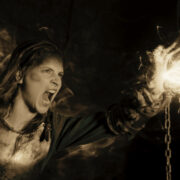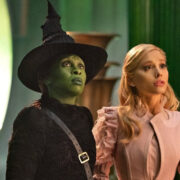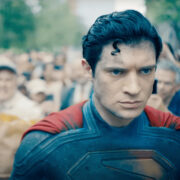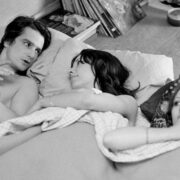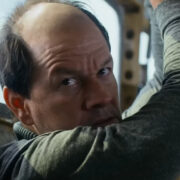How The WILD WILD WEST Was Lost: The 20th Anniversary Of Hollywood’s Steampunk Stalemate
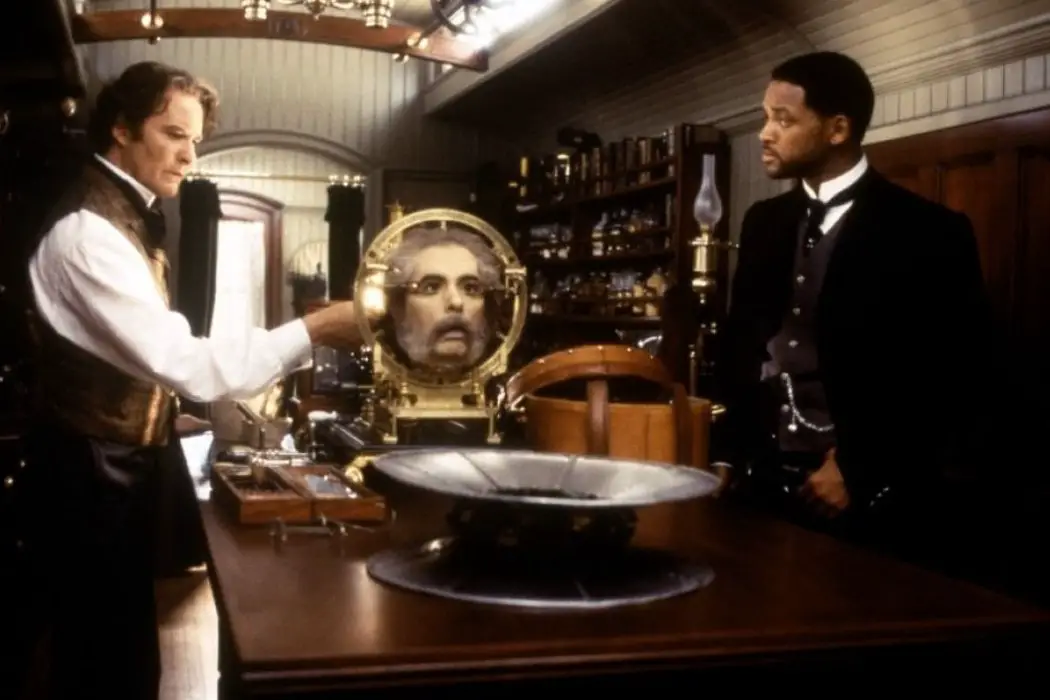
Midwesterner, movie lover, cinnamon enthusiast.
Hollywood’s last summer of the 20th Century was supposed to belong to Warner Bros. Will Smith passed up the role of Neo in The Matrix to re-team with Barry Sonnenfeld, director of Men in Black, a film that made nearly $600 million worldwide a couple years prior, for Wild Wild West. Smith even cut a ubiquitously played single that debuted in the spring — a formula that proved successful for the actor and director’s previous film. But instead, Wild Wild West, a steampunk western action comedy, became one of contemporary Hollywood’s biggest blunders after taking a critical thrashing and failing to recoup its ballooned budget in box office returns.
TV Origins
The idea of a steampunk western action comedy blockbuster attempt based on a long-dormant TV series feels unfathomable from the vantage point of 2019, where contemporary blockbuster cinema’s iron-clad premises are built on franchises wherein each new film is like an added Lego piece placed onto a larger, ongoing structure — a savvy business plan that minimizes any cataclysmic outing to an “oh well, that was just a misstep” reaction that’ll be entirely flattened when the devout fanbase sees the next Lego piece in less than three months’ time.
Almost as odd, from today’s cinematic landscape, is that 20 years ago, I was watching Wild Wild West on 35mm at the local four-screener (until my friends wanted to leave half an hour into it) — something currently reserved almost entirely for repertory screenings in big city art houses.
My own nostalgia aside, I have a hard time thinking WB’s resuscitation of “The Wild Wild West” was, like many of our current adaptations, aimed at nostalgic fans of the show, given that it ended its four-season run in 1969. It seems closer to something like HBO’s recent exhuming of Westworld, similarly a steampunk western, but one HBO was much more interested in sexying up for the late-night prestige audience than hoping anyone would remember Michael Crichton’s 1973 film.
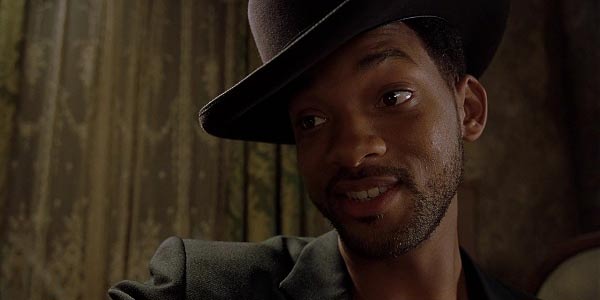
Of course, producers Sonnenfeld and Jon Peters weren’t much interested in prestige, but certainly the sex, casting (and showcasing the bodies of) both Smith and Salma Hayek and leading off its marketing with the multi hyphenate’s aforementioned single, a catchy track, which peaked at the very top of 1999’s Billboard Hot 100.
Hollywood’s Steampunk Past
The adaptation from small to big screen also included a heavy lean into the show’s steampunk sensibilities, a subgenre that seems destined to throw silver screen productions into the red. Just last year, in a piece prompted by the imminent release of the Peter Jackson-produced Mortal Engines, Maya Phillips took a taxonomy of critical steampunk stalemates — The Time Machine (2002), The League of Extraordinary Gentlemen, Around the World in 80 Days, Sky Captain and the World of Tomorrow, Van Helsing, to name a few — before asking if Mortal Engines could finally bust the mold.
As we know, it couldn’t, and punishingly so. Reviews were nearly roundly negative, garnering the film a 27% Rotten Tomatoes score, and it was a colossal box office blunder, making only $16 million domestically (and $68 million internationally) on a $100 million production budget. Deadline estimates Universal lost a total of $175 million from Mortal Engines alone.
The budget of Jackson’s project can actually help put Wild Wild West into perspective. The film from 20 years prior had a budget of $170-180 million, although some suggest that’s a conservative estimate, proposing its double the budget of a 2018 post-apocalyptic steampunk adventure film about shifting cities. According to Bombreport.com, Wild Wild West’s worldwide cume was $222 million, a not insubstantial figure before figuring it into the almost $300 million it cost WB to produce and market the film.
Sonnenfeld’s film finished 17th at the box office in 1999, making less than adult-only fare like the Tommy Lee Jones–Ashley Judd crime thriller Double Jeopardy and Frank Darabont’s three-hour-plus Stephen King prison drama adaptation The Green Mile.
But why did Wild Wild West flop? Why did it fail to hit with critics and audiences that came out for action comedies of the previous year, Rush Hour and Lethal Weapon 4, or that fell in love with Smith and Sonnenfeld’s previous film Men in Black, which is not only another action comedy, but one that, like Wild Wild West, heavily incorporates science fiction?

Maybe it comes back to steampunk.
“The seminal problem of many of these steampunk films has to do with identity,” Phillips offered. “The tricky part of the genre, like its futuristic cousin cyberpunk, is how it’s defined so broadly, how it by its very nature is a postmodern hodgepodge of different elements and thus frequently ducks between multiple genres: Is it sci-fi? Is it fantasy? The lines get blurred.”
“That isn’t to say that all hybrid genre films are fated to fail. The problem is when the films engage in different individual elements to the hindrance of the cohesion of the final product,” she continued.
Critical Reception
While that may be true for other perpetrators, it’s not reflected in Wild Wild West’s negative reviews. Noel Murray’s Nashville Scene review, which mostly lament’s the film’s lack of get-up-and-go, actually revels in its disparate genres, “Between Smith’s suave brutality, [Kevin] Kline‘s foggy romanticism, and Sonnenfeld’s giddy contrasting of the Western landscape with steam-powered contraptions, Wild Wild West almost achieves an enjoyable style.”
In the Austin Chronicle, Marc Savlov took aim at the lack of story and narrative cohesion, “Perhaps it’s just me, but wouldn’t it be nice to know a bit more about the characters in a film than who’s the good guy and who’s the bad? Things like, say, why they’re good, or bad, or indifferent?”
And Roger Ebert, in his one-star review, is more interested in condemning the two leads’ lack of chemistry, “They go through the motions, but there’s no eye contact. Imagine Bill Clinton and Kenneth Starr as partners in a celebrity golf tournament.”
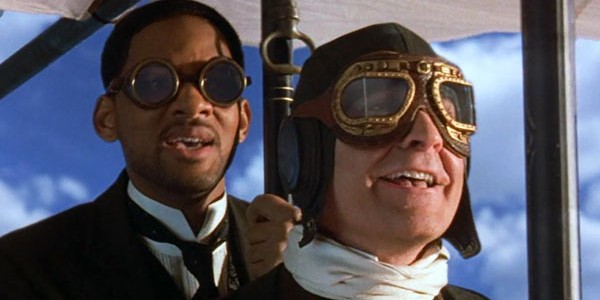
Though I can’t muster the same level of vitriol, it’s hard to disagree with Ebert’s main qualm: Smith and Kline’s chemistry just doesn’t pop. The problem is that Wild Wild West is nearly identical to Men in Black — an older white man well seasoned in this strange environment is paired with Will Smith, new guy on the block, to hunt down the man in charge for the town’s latest havoc. There are even repeated gags, lines and sequences, but feel more like a facsimile mostly sapped of the energy of their forebearer. But more importantly, Smith and Kline don’t mesh the way Smith and the cantankerous Jones did. I have trouble faulting either of them and enjoy them separately, here, but together, the diegetically unlikely pairing of Smith and Kline is too unlikely for a feature-length film.
Elmer Bernstein’s score shouldn’t be left off the hook, which finds the legendary composer stuck on autopilot, unable to hold a candle to Danny Elfman’s Men in Black score. And Kenneth Branagh, as the evil torso, chews scenery well, but is misfit to shoulder the pressure of big baddie all himself. He’s perfectly suited to play villain de jour in something like Harry Potter and the Chamber of Secrets, because the Harry Potter universe, unlike the one here, has so many moving pieces and various forces of malevolence that Branagh doesn’t have to carry all the weight himself.
Serious misgivings aside, Wild Wild West is far from being a chore. It’s gadgetry and setpieces are often amusing, Smith looks great in his tiny sunglasses, and there’s plenty on the fringe to appreciate, like Ted Levine and his grotesque ear horn.
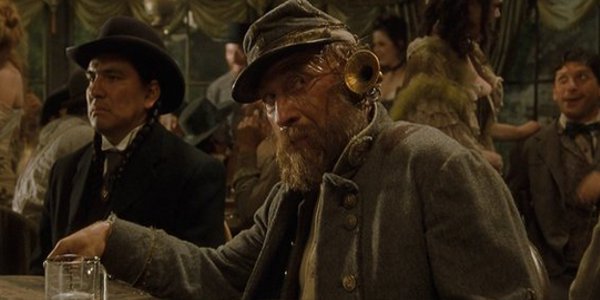
Chicago Reader’s Jonathan Rosenbaum leaned positive in his capsule review, “Though the movie is as gadget happy as any Bond flick, the pictorial pleasures deriving from Bo Welch’s production design and Michael Ballhaus’s cinematography are central to its charms. This is even lighter stuff than Men in Black, but Sonnenfeld’s cheerful irreverence keeps it reasonable.”
Andrew O’Hehir, for Sight & Sound, mostly echoed that level of enthusiasm but had the room to expound, “Wild Wild West gets by on sheer style, as well as the irrepressible likeability of its star Will Smith. But it’s reasonable to ask why a film that exists solely to have fun should seem so laboured.”
O’Hehir’s also right to later flag the film’s half-dozen writers for its unsatisfactory banter and weird, non-committal relationship to race, before nailing Wild Wild West’s largest problem in his outro:
“As he gets further away from his apprentice years as the Coen Brothers‘ cinematographer, it’s increasingly clear that Sonnenfeld shares their fascination with technique and genre, but has none of their genius for characterisation and little interest in human beings except as design elements.”
Wild Wild West: Conclusion
Wild Wild West doesn’t play as laborious as critics reported in 1999, which was most likely a reaction preemptively fed by disconcerting reports of the film’s bungled production and an anticipation built off the success of Men in Black. Yes, it was a financial disaster for WB, and yes, Smith passing up the role of the Wachowski’s Neo is a gaffe for the ages, but Sonnenfeld’s finished film isn’t a disastrous piece of studio filmmaking.
A more faithful framing of Wild Wild West, 20 years on, is as a charmingly mediocre film that couldn’t match WB’s, and in turn the audience’s, blockbuster expectations; a film that made $113 million domestically — much more than the following year’s Shanghai Noon or its more successful sequel, 2003’s Shanghai Knights. But it isn’t ripe for reevaluation, exactly. More than its individual merits, Wild Wild West now exists as a bizarre, quaint palimpsest of a Hollywood where dumping $200 million on a steampunk western action comedy was even a possibility, before profitability could be so well calculated — a wild west.
Watch Wild Wild West
Does content like this matter to you?
Become a Member and support film journalism. Unlock access to all of Film Inquiry`s great articles. Join a community of like-minded readers who are passionate about cinema - get access to our private members Network, give back to independent filmmakers, and more.





